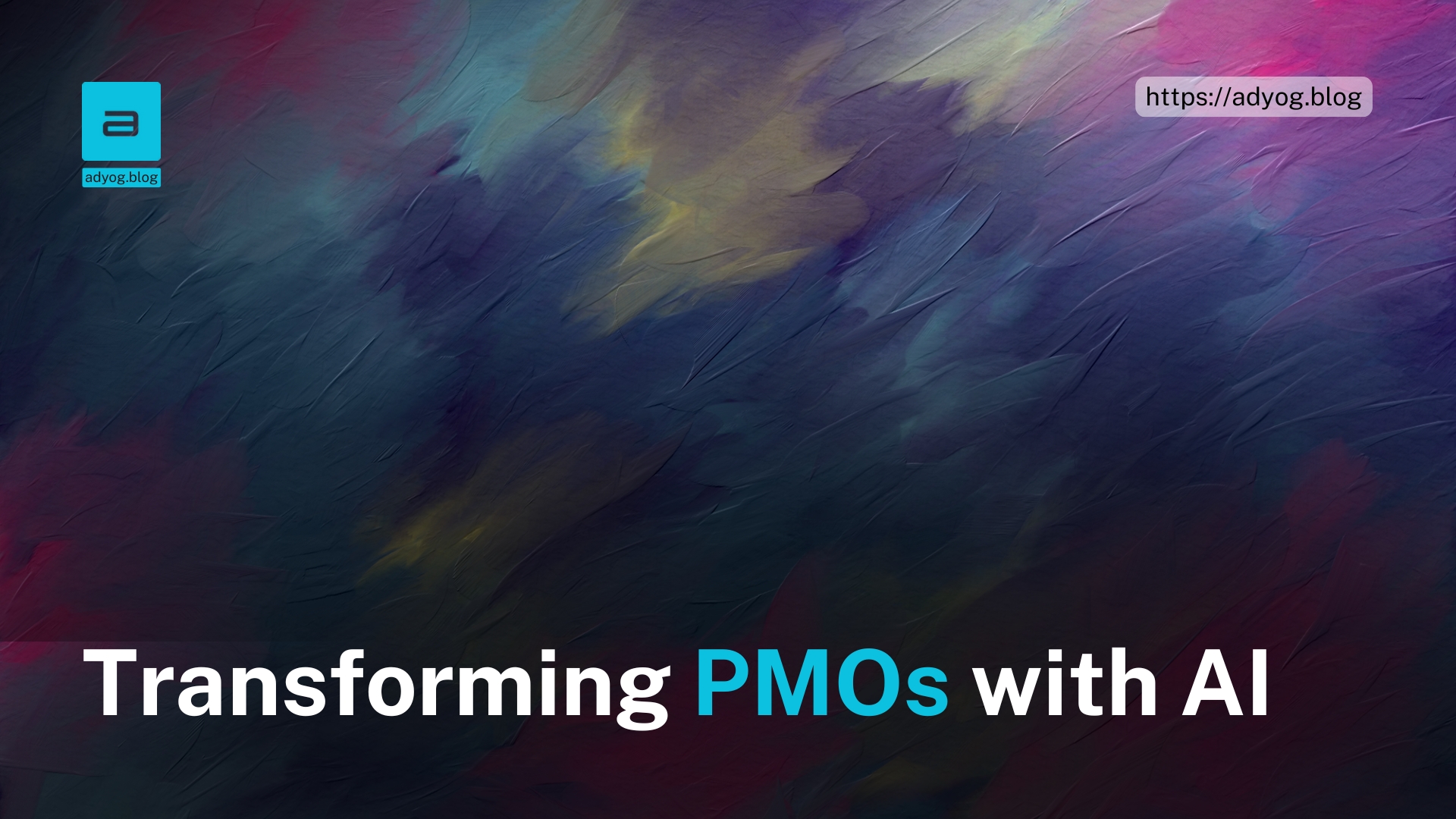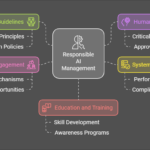Transforming PMOs: A Practical Guide to AI-Powered Project Governance and Compliance
The Dawn of AI-Driven Project Management Offices
In today’s rapidly evolving business landscape, traditional Project Management Offices (PMOs) are facing unprecedented challenges. The increasing complexity of projects, stricter compliance requirements, and the need for real-time decision-making have pushed organizations to seek innovative solutions. This is where Artificial Intelligence (AI) steps in, revolutionizing how PMOs operate and deliver value.
As someone who has led both traditional and AI-transformed PMOs, I’ve witnessed firsthand the remarkable impact of this technology. In this comprehensive guide, I’ll walk you through the practical steps of transforming your PMO using AI, with real-world examples and actionable insights.
Understanding the AI-Driven PMO Revolution
The Evolution from Traditional to AI-Powered PMOs
Traditional PMOs often struggle with:
- Time-consuming manual reporting
- Inconsistent governance processes
- Delayed risk identification
- Resource allocation challenges
- Compliance monitoring inefficiencies
AI-driven PMOs, in contrast, leverage intelligent automation to:
- Generate real-time project insights
- Standardize governance procedures
- Predict potential risks before they materialize
- Optimize resource allocation automatically
- Ensure continuous compliance monitoring
The Business Case for AI Implementation
Recent studies show that AI-driven PMOs can reduce administrative tasks by up to 40% and improve project success rates by 25%. This translates to significant cost savings and better project outcomes. For instance, a mid-sized technology company implemented AI in their PMO and saved approximately 1,200 hours per month in manual reporting tasks alone.
How to Transform Your PMO with AI: A Practical Guide
Step 1: Assessment and Planning
- Evaluate Current PMO Maturity
- Document existing processes
- Identify pain points and inefficiencies
- Assess team capabilities and skills gaps
- Define Transformation Goals
- Set specific, measurable objectives
- Establish success metrics
- Create a realistic timeline
Step 2: Selecting the Right AI Technologies
Essential AI Capabilities for Modern PMOs:
- Predictive Analytics
- Project outcome prediction
- Risk assessment
- Resource utilization forecasting
- Natural Language Processing (NLP)
- Automated status reporting
- Document analysis
- Communication monitoring
- Machine Learning
- Pattern recognition in project data
- Automated categorization
- Anomaly detection
Step 3: Practical Implementation Guide
Let’s walk through a real-world example of implementing AI in your PMO:
Case Study: Implementing AI-Driven Risk Management
Starting Point:
- Manual risk assessment processes
- Weekly risk review meetings
- Reactive risk management approach
Implementation Steps:
- Data Preparation (Week 1-2)
Collect historical project risk dataStandardize risk categoriesClean and structure existing data
- AI Model Selection (Week 3)
Choose appropriate machine learning algorithmsSet up training datasetsDefine risk prediction parameters
- Integration and Testing (Week 4-6)
Connect AI system with project management toolsRun parallel testing with manual processesCalibrate risk thresholds
- Team Training (Week 7-8)
Conduct hands-on training sessionsCreate user guides and documentationEstablish support procedures
Step 4: Governance and Compliance Framework
Building an AI-Enhanced Governance Structure
- Automated Compliance Monitoring
- Real-time policy adherence checking
- Automatic flag raising for violations
- Compliance reporting automation
- Smart Approval Workflows
- AI-powered decision support
- Automated routing based on project parameters
- Digital signature integration
Best Practices and Common Pitfalls
Keys to Success
- Start Small, Scale Smart
- Begin with pilot projects
- Measure and document outcomes
- Expand based on proven success
- Focus on Change Management
- Regular stakeholder communication
- Comprehensive training programs
- Clear documentation and support
Common Challenges to Avoid
- Over-Automation
- Not everything needs AI
- Maintain human oversight
- Balance automation with expertise
- Data Quality Issues
- Ensure data accuracy
- Implement validation procedures
- Regular data cleaning and maintenance
Measuring Success and ROI
Key Performance Indicators
- Efficiency Metrics
- Time saved on administrative tasks
- Accuracy of AI predictions
- Resource optimization levels
- Project Success Metrics
- Improvement in project delivery times
- Reduction in risk incidents
- Enhanced compliance rates
ROI Calculation Framework
ROI = [(Cost Savings + Productivity Gains) - Implementation Costs] / Implementation Costs × 100Future Trends and Recommendations
Emerging Technologies
- Advanced AI Capabilities
- Natural Language Generation for reporting
- Deep learning for complex pattern recognition
- AI-powered virtual project assistants
- Integration Possibilities
- Blockchain for compliance tracking
- IoT integration for real-time monitoring
- Extended Reality (XR) for project visualization
Recommendations for 2025 and Beyond
- Investment in AI Skills
- Train project managers in AI basics
- Hire AI specialists for PMO teams
- Develop internal AI expertise
- Technology Roadmap
- Plan for regular AI updates
- Consider emerging technologies
- Maintain flexibility in implementation
Conclusion
The transformation from a traditional PMO to an AI-driven one is not just about implementing new technology—it’s about reimagining how project governance and compliance can work in the digital age. By following the practical steps and guidelines outlined in this guide, organizations can begin their journey toward a more efficient, data-driven, and successful PMO.
Remember, the key to success lies in careful planning, systematic implementation, and a commitment to continuous improvement. Start your AI transformation journey today, and position your PMO for success in the increasingly digital future of project management.
Author’s Note: This guide is based on real-world experience and current best practices in PMO transformation. As AI technology evolves, some specific recommendations may need to be updated. Always consult with AI and project management experts when implementing these changes in your organization.





Leave a Reply